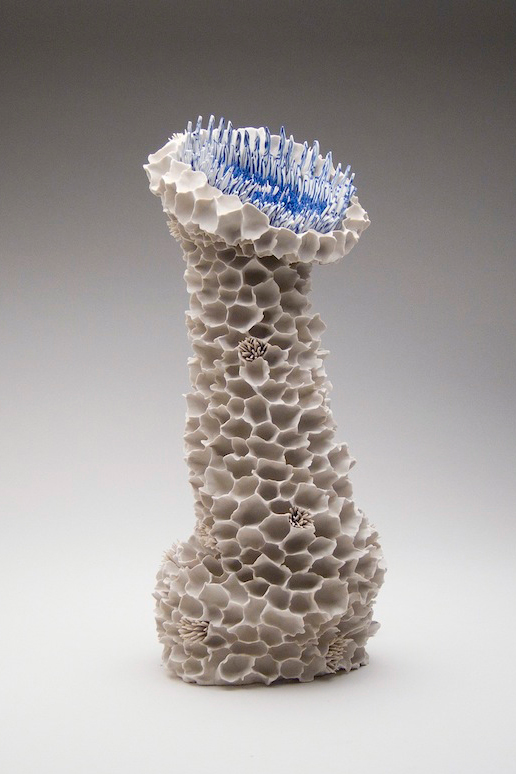anemone
I wrote this for a contemporary art class I took in college. It’s about a sculpture I saw in Boston’s Museum of Fine Art.
Single Hoo Exploring
Zemer Peled created Single Hoo Exploring out of porcelain shards in the shape of a sea anemone. She captured the anemone’s form elegantly such that Single Hoo wouldn’t look out of place on the sea floor among its organic siblings. Upon first inspection, this art piece explores the limits of the ceramic medium since it was made in such an atypical manner. The rough texture of the anemone’s body makes it look as if the sculpture was created out of discarded and broken pieces from a pottery studio, much unlike anything else on display in the room. From viewing this piece alone, Ms. Peled’s passion and appreciation for the natural world is immediately apparent. Single Hoo possesses other dimensions beyond exploration of porcelain medium, revealing human’s inability to master nature and the fragility of nature. In many ways, the statue is identical to the sea anemone. Both share this organic form and defensive capability; one with sharp glass and another with stinging tentacles. Both are equally fragile; the statue must be kept safe from shattering and the anemone is dependent on the environment in which its anchored. The anemone can live on after individual death through its offspring, yet the statue breaks and is not remade without the guided hand of Zemer. The anemone contributes and depends on an ecosystem for its robustness. Humans may be able to adapt quicker than the anemone but ultimately rely on the same ecosystem’s health. Unlike the statue, anemones and humans can not live within the confines of a glass box. Single Hoo Exploring reminds those who see it to be good stewards and live in harmony with nature. Living in opposition to nature ensures that we will not be remade after shattering like a porcelain statue.
